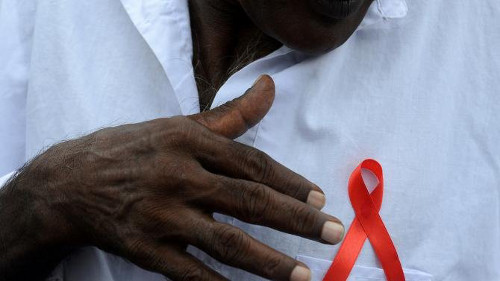BY BTL STAFF

A June 6 New York Times article, "America's Hidden HIV Epidemic," reveals that last year, the CDC, using the first comprehensive national estimates of lifetime risk of HIV for several key populations, predicted that if current rates continue, one in two African-American gay and bisexual men will be infected with the virus. That compares with a lifetime risk of one in 99 for all Americans and one in 11 for white gay and bisexual men.
In the article, journalist Linda Villarosa explores the HIV crisis, most acute in Southern states, which hold 37 percent of the country's population and as of 2014 accounted for 54 percent of all new HIV diagnoses.
Villarosa points to a CDC report in February, which shows that only 48 percent of black gay and bisexual men effectively suppress the virus with consistent medication, and the numbers are even lower for these men in their late teens and 20s. Only a small percentage of black people use PrEP to prevent contracting the virus, accounting for only 10 percent of prescriptions; the vast majority of users are white. The article explains that many black gay and bisexual men either can't afford PrEP or don't know about it — they may not see a doctor regularly at all, and many medical providers haven't even heard of PrEP.
When discussing the causes of and the solutions for the HIV problem, rather than perpetuate the myth that only "promiscuous risk-taking black gay man" are responsible for the prevalence of HIV, Villarosa calls out the structural barriers; lack of access to transportation and information about prevention, testing and treatment; and a high community viral load (prevalence) as some of the many reasons. She wrote that stigma, discrimination and shame drive gay and bisexual men to hide their sexuality and avoid the health care system – and making sure providers have adequate resources and understand how to care for HIV patients.
But this requires funding, and right now, the president's proposed budget includes a $186 million cut in the CDC's funding for HIV/AIDS prevention, testing and support services. Villarosa points to a 2014 study conducted by Dr. David Holtgrave of the John Hopkins Bloomberg School of Public Health which found that to make any real progress in the HIV/AIDS crisis among black gay and bisexual men in the U.S., the government would need to invest an additional $2.5 billion to address unmet testing, care, treatment and prevention needs.
A June 15 article by the Poz staff gives props to Villarosa and longtime advocate Kenyon Farrow of the Treatment Action Group for making clear, when it comes to HIV, that the community "must not fall prey to myths, shaming and lazy reporting, but hold news outlets accountable in our search for the truth."
This comes in response to a recent CBS Sunday Morning segment, "36 Years and Counting: AIDS in America," reported by Rita Braver who simply states that "AIDS prevention and treatment drugs can be expensive" and "that not everyone has access to them" without addressing the current administration's attack on the Affordable Care Act or the failure of certain states to expand Medicaid.
The Poz article stressed that it's not enough to say, "the rate of new HIV cases tends to be higher in the African-American and Latino communities," which happens a lot in everyday reports about the HIV epidemic. A basic Google search, as noted in the article, reveals what groundbreaking work is actually happening now and the second and third generations of black and brown activists who are helping to shape new strategies to address HIV as an issue of racial, gender and economic justice, and in some cases, working closely with first-generation AIDS activists. Poz gives a nod to the many public service campaigns that emphasize the importance of knowing one's status and maintaining an undetectable viral load as a means of reducing transmission risk. The article encourages members of the community to go beyond just learning about the HIV epidemic but to take the time to learn what can be done to help.
HIV Trends In Michigan
The 2016 annual review of HIV trends in Michigan shows that each year there are more new diagnoses of HIV infection than deaths, according to the Michigan Department of Health and Human Services. As a result, the reported number of persons living with HIV in Michigan is increasing. MDHHS estimates that 18,800 persons were living with HIV infection in Michigan as of July 2015. Between 2010 and 2014, the rate of new diagnoses increased significantly among persons 25-29 years of age.
In 2014, the rate among black males was more than 10 times that of white males. Almost three quarters (71 percent) of teen and young adult cases combined are residents of Southeast Michigan. Of these cases, 60 percent were residents of the city of Detroit at the time of HIV diagnosis.










